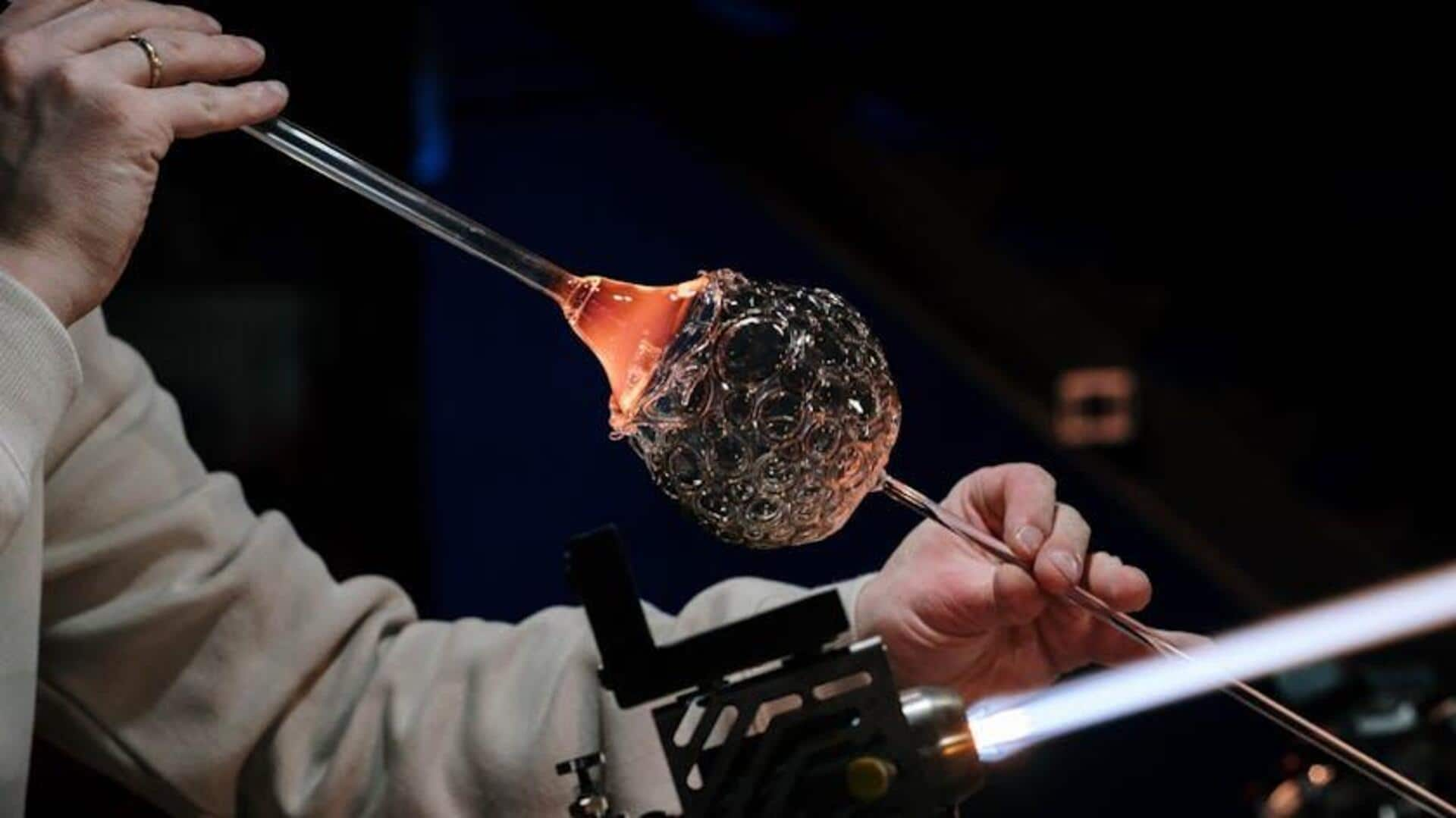
Glassblowing workshops: Molten art journeys
What's the story
Glassblowing is a centuries-old art form that involves manipulating molten glass into beautiful and functional objects. This mesmerizing craft combines creativity, skill, and a dash of science. Attending a glassblowing workshop gives you the opportunity to not only learn about this captivating art form but also create your very own glass masterpieces. These workshops offer a unique hands-on experience, all under the expert guidance of seasoned artisans.
Getting started
Discover the magic of glassblowing
Before beginners can get hands-on, they need to understand the fundamentals of glassblowing. Workshops start with a safety briefing and a rundown of tools and materials. Students observe a master artist as they demonstrate gathering molten glass, shaping it on the marver, and blowing it into form. This demonstration helps to visualize what participants will be doing when it's their turn to try.
Hands-on experience
Create your own masterpiece
Post the demo, attendees roll up their sleeves to create their very own glass masterpiece. Under the watchful eyes of their teachers, they learn to gather, shape, and ultimately blow the glass to form basic objects like paperweights or baubles. This segment of the workshop is incredibly hands-on, letting people feel the rush of shaping red-hot liquid glass for themselves.
Adding color
The role of color in glass art
One of the most thrilling parts of glassblowing is learning to infuse color into your creations. Most workshops teach you how to apply colored powders or frits (crushed colored glass) to clear molten glass before shaping it. This technique creates beautiful swirls and patterns within your finished piece. You also learn about color compatibility and how different colors behave under extreme heat.
Aftercare and display
From workshop to world: Displaying your creation
Once participants have created their pieces, they need to be slowly cooled in an annealer, a special kiln that slowly brings down the temperature to avoid cracking. This process can take anywhere from 24 to 48 hours, depending on the size and thickness of the piece. Instructors also provide tips on how to display these beautiful artworks at home or gift them, so that they remain intact for decades.
Moving forward
Tips for future glass artists
If you're keen on continuing your glassblowing journey after the workshop, instructors usually recommend advanced classes, share resources for buying supplies for home setups (if that's practical), and suggest local studios that offer open studio time for practicing outside of class. They can also advise you to join online forums or local art communities for ongoing education and inspiration.